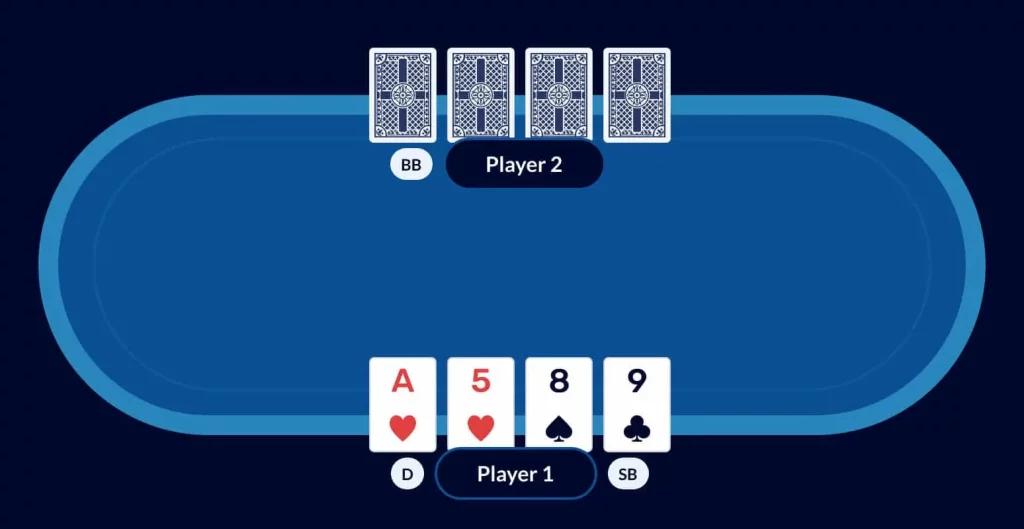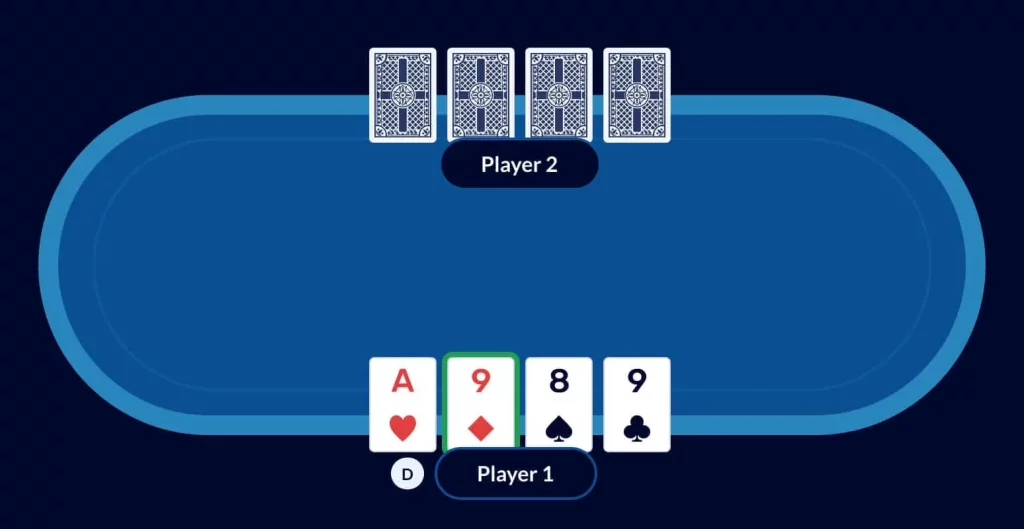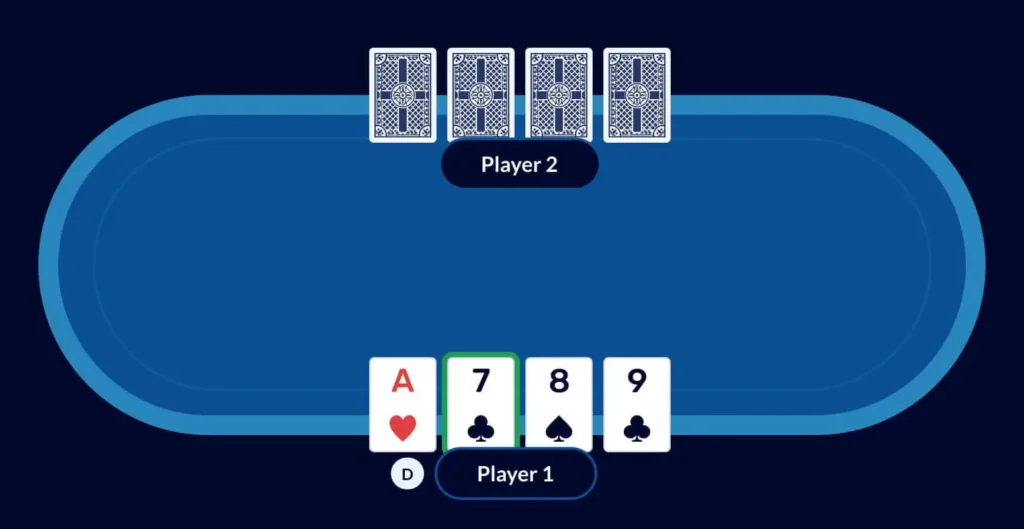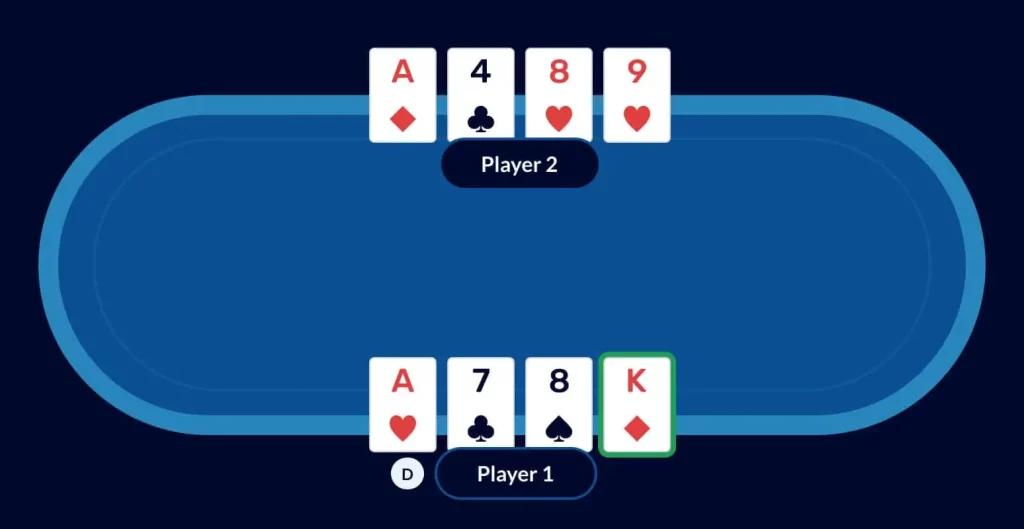Badugi Rules – How to Play Badugi Poker
 Reviewed by WSOP Winner Chris ‘Fox’ Wallace
Reviewed by WSOP Winner Chris ‘Fox’ Wallace
Badugi is a fun, unusual poker game that’s most closely related to 5-Card Draw or Lowball Poker, but with a twist: Badugi is one of the few poker games where you don’t make a five-card hand!
That’s right, Badugi players aren’t trying to make any of the usual poker hands, like a straight or full house. Badugi uses an entirely different hierarchy of hands, making it a great game for players looking to stay sharp and change things up.
A Quick Guide to Badugi Poker Hands
A Badugi hand consists of just four cards, with the goal being to make the lowest hand you can. Aces count as low, so the lowest possible hand you can make is A-2-3-4, all of different suits.
That’s because if you have multiple cards of the same suit, or rank, only one of them can be played in your final hand. Each card in your hand must be a different rank and a different suit, or it can’t be counted. For example:
- If you end up with two jacks, one must be left out of your hand meaning that you end up with a three-card hand.
- Likewise if you have two diamonds, one would be left out of your final hand, resulting in a three-card hand.
- If you ended up with three clubs, only one of them could be used in your Badugi hand, leaving you with a two-card hand.
In Badugi any four-card hand (known as a Badugi) beats any three-card hand; any three-card hand beats any two-card hand, and so on. Players have three draws in which to discard and replace their cards before the showdown.
Let’s take a closer look at an example hand.
Badugi Rules – A Step by Step Guide
In this hand two players are heads-up in a game of limit Badugi. This means all betting is in pre-agreed, fixed units.
1. The Deal

Players place the big and small blinds, and each player receives four hole cards. The first betting round follows, as players must call the big blind.
Player 1 has two hearts, so at the moment their hand is a three-card nine-high. They complete the big blind and their opponent checks.
2. The First Draw

Player 1 is trying to make a Badugi – a four-card hand of different suits and ranks – so discards their higher heart (the 5) in an attempt to draw a better replacement. They manage to draw a diamond for four different suits, but unfortunately for them they have also paired their 9. Their opponent also draws one card, and another betting round follows. Both players check.
3. The Second Draw

Player 1 needs to discard their second 9, and draws a 7. Lower cards are great, but this one happens to also be a club for two clubs in the hand. Their opponent draws one card again. Another betting round follows, and both players check again.
4. The Third Draw

Player 1 keeps the lower club and discards the 9, drawing the King of diamonds. This means they now have a Badugi – a hand of four cards of different ranks and suits – even though with a King-high it is far from the best Badugi hand possible. Player 2 draws one card, and the final betting round takes place. Player 2 checks, Player 1 bets and Player 2 calls.
We can see that Player 2 has a decent three-card hand of A-4-8, but Player 1 wins the pot because any four-card hand beats any three-card hand.
Badugi Strategy – How to Play Badugi Poker and Win
Draw poker games like Badugi, 5-Card Draw and 2-7 Triple Draw don’t use community cards, so players won’t be able to use the board to try to determine their opponents’ hands as they might in flop games like Texas Hold’em or Omaha.
Similarly, as Badugi is usually played as a limit game, players cannot use their opponents’ bet sizing to establish their strength, as one might in a game of No-Limit Hold’em, for example. So how can you put your opponents on a hand?
Take Note of Your Opponents’ Draws
In all forms of draw poker, information must instead be taken from the number of cards each player chooses to draw.
- A player drawing one card is highly likely to have a good three-card hand which they are seeking to improve.
- A player drawing two cards is probably drawing to improve a two-card hand, and so has some way to go.
- Drawing three or four cards shows a very weak hand which needs some luck to improve.
- On the other hand, a player standing pat – drawing no cards at all – is showing extreme strength, so is either very happy with their hand, or setting up an opportunity to bluff.
Understand What You’re Drawing For
It’s important to recognize that making a four-card hand (a Badugi) can be difficult, even if you are only drawing one card to a made three-card hand. For example, when drawing one card with a potentially great hand like A 2
3
3
, you would discard the 3d and need to hit:
- A club
- NOT the A, 2 or 3 of clubs, as that would pair one of your hole cards
- Leaving just 10 cards to hit to make a Badugi
Remember the Importance of Position
As in most forms of poker, position is a crucial factor in developing a winning Badugi strategy.
Just as in flop games, late position Badugi players benefit by acting after other players have bet, but they also have the advantage of drawing last.
Consider this: if your opponent has position on you and continually stands pat, drawing no cards, how confident would you need to be to call their bets? Drawing last affords great opportunities like these to those who enjoy bluffing!
Badugi Hand Values
Finally, here’s a quick reminder of the hierarchy of poker hands used in Badugi, from best to worst.
- A Badugi, or four-card hand
These four cards must all be of different suits and ranks, with the lowest high card winning in any ties. If two hands share the same high card, the next highest card will be used, and so on, so a hand of A-3-7-9 would beat a hand of A-3-8-9. The best Badugi possible is A-2-3-4 of different suits, while the worst Badugi would be T-J-Q-K of different suits. A Badugi beats any non-Badugi hand. - A three-card hand
A three-card hand contains two cards which share a suit or rank, therefore one of them cannot be included in the final hand. The best three-card hand is A-2-3 of different suits. Note that, as with all Badugi hands, the lowest high card determines the winner if all players have a three-card hand; the rank of any non-included cards is not considered. For example, A2
8
A
beats A
2
9
2
, even though the fourth, non-included card is an ace, compared to a 2. This is because the three-card hand of A-2-8 beats A-2-9. Any three-card hand beats any one- or two-card hand.
- A two-card hand
A two-card hand contains only two playable cards, as the others are duplicated in rank or suit. For example, 35
5
Q
beats A
4
6
6
, as a two-card hand of 3-5 beats A-6. Any two-card hand beats any one-card hand.
- A one-card hand
A one-card hand occurs when none of the four cards are not duplicated by rank or suit, so only the lowest card can be used, e.g. 37
8
J
is a ‘one-card 3’. It would not be possible to add any of the other cards to your hand, as they would duplicate the suit of the 3.
Play Badugi Poker Online
Play Badugi at one of our recommended real money poker sites, and try this unusual poker game for yourself.
If you enjoy other, less traditional poker variations, why not check out Open Face Chinese Poker? Or, for Hold’em players looking for a new game they can pick up easily, we’d recommend giving Omaha a try.
Badugi is available to play NOW at PokerStars!

PokerStars
Looking to level up your Poker Skills further?